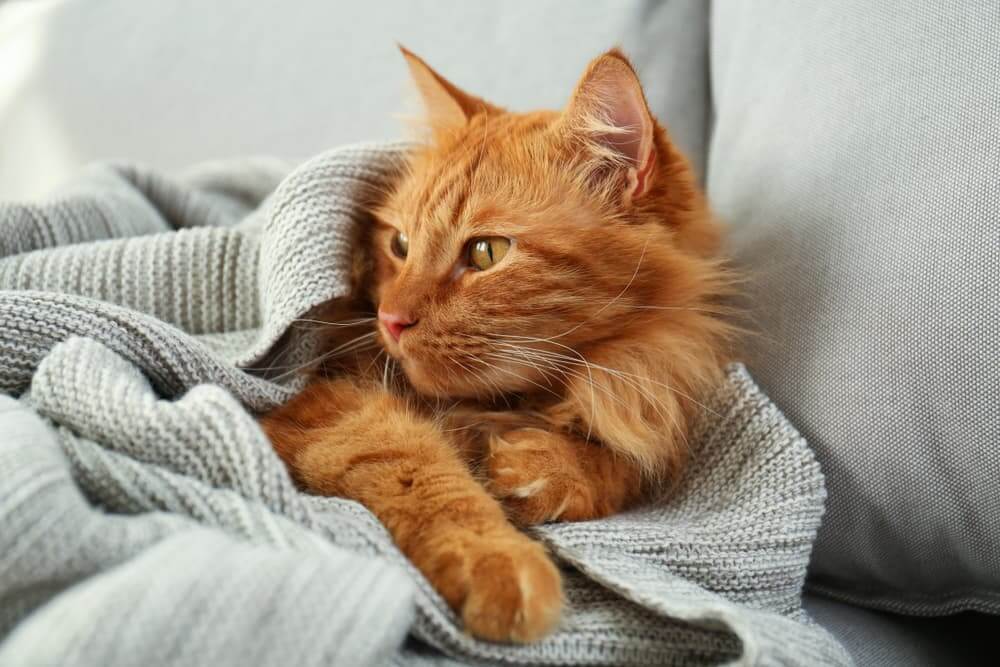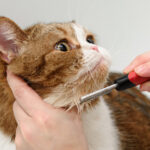As cat lovers, we all want to create a safe and nurturing environment for our furry companions. Among the rising trends in holistic pet care, essential oils have gained popularity for their myriad of benefits, from promoting relaxation to supporting overall well-being. However, not all essential oils are safe for our feline friends. In fact, many can be toxic and harmful.
This article aims to guide you through the world of non-toxic essential oils that are safe for cats, helping you make informed choices for your home. We’ll explore the best options, usage tips, and how to incorporate these gentle scents into your space while keeping your beloved pets out of harm’s way. Join us as we discover the fragrant, soothing world of non-toxic essential oils that can enhance both your home atmosphere and your cat’s quality of life!
Table of Contents
- Understanding the Safety of Essential Oils for Cats
- The Best Non-Toxic Essential Oils to Enhance Your Home
- How to Safely Use Essential Oils Around Your Feline Friend
- Signs of Essential Oil Sensitivity in Cats and What to Do
- Q&A
- To Wrap It Up
Understanding the Safety of Essential Oils for Cats
When it comes to the safety of essential oils around our feline friends, understanding the risks is crucial. Cats have a unique metabolism that differs significantly from ours, making them particularly sensitive to certain compounds found in essential oils. While some oils may offer therapeutic benefits, it’s important to always consider whether the oil is suitable for your cat. Never apply essential oils directly to your cat’s skin or fur, and avoid using oils that are known to be toxic, such as:
- Tea Tree Oil
- Pennyroyal Oil
- Lavender Oil
- Peanut Oil
Fortunately, there are some essential oils that are considered safer for use around cats when used appropriately. Always opt for oils that can be safely diffused or diluted, and consult with a veterinarian before introducing any essential oils into your home. Here’s a quick reference table of some non-toxic essential oils:
| Essential Oil | Safety Rating | Usage Tips |
|---|---|---|
| Sweet Basil | Safe | Use in moderation |
| Ginger | Safe | Aromatic diffusion |
| Cardamom | Safe | Low concentration |
| Frankincense | Safe | Low diffusion |
The Best Non-Toxic Essential Oils to Enhance Your Home
Creating a safe and inviting atmosphere in your home is essential, especially when you share your space with furry friends. Non-toxic essential oils not only scent your living areas but can also promote a sense of well-being. When selecting oils, it’s crucial to choose those that are safe for cats, as some can be harmful. Here’s a list of cat-friendly essential oils that you can incorporate into your home:
- Lavender: Known for its calming properties, lavender can help reduce stress and anxiety.
- Chamomile: This soothing oil can create a peaceful environment and promote relaxation.
- Frankincense: Offers a warm, earthy aroma and is believed to support a sense of grounding.
- Ginger: A wonderful choice for adding warmth and uplifting energy to your home ambiance.
To maximize the benefits of essential oils, consider using a DIY diffuser blend. Simply combine a few drops of your chosen oils with water in a diffuser, ensuring the space is well-ventilated. Always monitor your pets for any signs of discomfort. Additionally, here’s a simple table featuring essential oils and their benefits:
| Essential Oil | Benefits |
|---|---|
| Lavender | Calming, reduces anxiety |
| Chamomile | Promotes relaxation |
| Frankincense | Grounding, enhances mood |
| Ginger | Uplifting, energizing |
How to Safely Use Essential Oils Around Your Feline Friend
When using essential oils in a home with cats, it’s essential to approach the matter with caution. Cats possess a unique metabolism that can make them more susceptible to the effects of certain oils. To ensure the safety of your feline companion, consider the following guidelines:
- Avoid toxic essential oils: Be well-informed about which essential oils can be harmful to cats. Some oils, such as tea tree, eucalyptus, and peppermint, are particularly toxic.
- Use in moderation: If you choose to use essential oils, opt for well-diluted forms and apply them in well-ventilated areas. This minimizes the risk of your cat inhaling concentrated vapors.
- Observe your cat: Pay attention to any unusual behavior or signs of distress after introducing an essential oil into your environment. Cats may exhibit symptoms such as vomiting, drooling, or lethargy if they are sensitive to certain oils.
Additionally, consider the following non-toxic essential oils that are generally safe for cats when used appropriately:
| Essential Oil | Use Case |
|---|---|
| Lavender | Calming effects; can be diffused lightly. |
| Frankincense | May promote relaxation; use with caution. |
| Ginger | Can help with nausea; use in very small amounts. |
| Cardamom | May aid digestion; only use diluted. |
By being mindful of the essential oils you choose and how you use them, you can create a harmonious living space that supports both your well-being and that of your furry friend. Remember, it’s always best to consult with your veterinarian before introducing any new product into your home, especially if you’re unsure about its effects on your pet.
Signs of Essential Oil Sensitivity in Cats and What to Do
While essential oils can offer many benefits for your home, it’s crucial to pay attention to your feline friends, as they can be sensitive to these aromatic substances. Signs of sensitivity may include excessive grooming, lethargy, or respiratory issues such as coughing or sneezing. Additionally, you might notice your cat becoming more vocal than usual or displaying signs of discomfort, such as hiding or avoiding certain areas of your home where oils have been used. Other signs can include loss of appetite or vomiting, which indicate that they may not react well to specific oils.
If you suspect your cat is experiencing sensitivity to essential oils, act quickly to mitigate any discomfort. First, remove any oils or diffusers from the area and ensure that your space is well-ventilated. Observe your cat for any ongoing symptoms and consider consulting your veterinarian for further assessment. It’s important to keep your essential oil usage to a safe level, using only non-toxic and cat-safe oils. Additionally, familiarize yourself with the following oils that are generally considered safe:
| Essential Oil | Safety Level |
|---|---|
| Lavender | Safe in moderation |
| Frankincense | Safe |
| Ginger | Safe in low amounts |
| Peppermint | Use sparingly |
Q&A
Q&A: Non-Toxic Essential Oils for Cats - Safe Choices for Your Home
Q1: Are essential oils safe for cats?
A1: Essential oils can be toxic to cats due to their unique metabolism and liver function. Many oils, especially in concentrated forms, can cause adverse reactions. However, there are a few non-toxic essential oils that can be safe for use around cats when diluted properly. It’s essential to do thorough research and consult with your veterinarian before introducing any essential oils into your home.
Q2: What are some non-toxic essential oils that can be used around cats?
A2: Some safer options include lavender, chamomile, and cedarwood oils. When properly diluted, these oils can be beneficial for relaxation and calming effects. Always ensure that any essential oil used is of high quality and specifically labeled as safe for pets.
Q3: How should I use non-toxic essential oils safely around my cat?
A3: When using essential oils, always dilute them significantly with a carrier oil or a diffuser before exposure. You can diffuse a few drops of the non-toxic essential oils in a well-ventilated area to minimize concentrated exposure. Avoid applying oils directly to your cat’s skin or fur, as they may lick it off and ingest harmful compounds.
Q4: What are the signs that an essential oil may be affecting my cat negatively?
A4: Watch for symptoms such as drooling, vomiting, diarrhea, difficulty breathing, or unusual behavior. If you notice any of these symptoms after using essential oils, it’s crucial to remove your cat from the area and consult your veterinarian immediately.
Q5: Can I use essential oils for cleaning if I have a cat?
A5: Yes, but with caution! Opt for essential oils that are known to be safe for pets, such as lemon or tea tree oil in very diluted forms. Always ensure that the area is well-ventilated and allow surfaces to dry completely before allowing your cat back into the space. It’s wise to test a small area first to confirm your cat’s sensitivity.
Q6: Are there any essential oils that should be avoided entirely with cats?
A6: Yes, there are several essential oils that are highly toxic to cats, such as tea tree oil, eucalyptus, peppermint, cinnamon, clove, and citrus oils. These can cause severe health problems, so it’s essential to keep them out of your home and consult your vet if unsure.
Q7: What other alternatives can I use for a fresh-smelling home if I have a cat?
A7: You can try using natural methods such as baking soda, vinegar, or herbal sachets made from rosemary or chamomile. These are generally safe for cats and can help keep your home smelling fresh without the risks associated with essential oils.
Q8: Is it safe to apply non-toxic essential oils to my cat’s bedding or toys?
A8: It’s best to avoid directly applying any essential oils to your cat’s bedding or toys, as even diluted oils can be consumed when your cat licks them. Instead, consider using a diluted spray on the surrounding area or infusing the bedding and toys with the scent indirectly by placing a few drops on a cotton ball and leaving it outside their immediate reach.
Q9: Where can I find more information about safe essential oils for pets?
A9: Resources like the ASPCA, veterinary websites, and holistic pet care blogs can provide valuable information. Always consult your veterinarian for personalized recommendations regarding essential oils and your specific pet’s needs.
By following these guidelines and being aware of the potential risks, you can enjoy the benefits of non-toxic essential oils in your home while keeping your feline friends safe and happy!
To Wrap It Up
ensuring a safe and healthy environment for your feline friend is paramount, and incorporating non-toxic essential oils into your home can be a wonderful way to enhance your living space. By choosing the right oils, such as lavender, chamomile, and cedarwood, you can enjoy the benefits of aromatherapy without compromising your cat’s well-being. Always remember to dilute essential oils properly and consult your veterinarian if you’re unsure about any new additions to your home. With a little research and care, you can create a soothing atmosphere for both you and your beloved cat. Thank you for exploring the world of non-toxic essential oils with us—here’s to a happy, harmonious home for you and your furry companion!
















